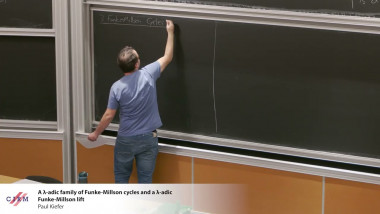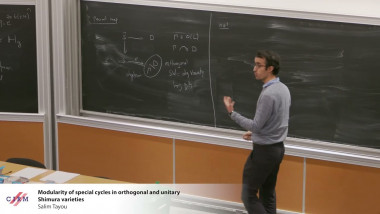
A $\lambda$-adic family of Funke-Millson cycles and a $\lambda$-adic Funke-Millson lift
By Paul Kiefer

Modularity of special cycles in orthogonal and unitary Shimura varieties
By Salim Tayou
Appears in collection : Arithmetic, Geometry, Cryptography and Coding Theory / Arithmétique, géométrie, cryptographie et théorie des codes
Let X and Y be two curves over a common base field k. Then we can consider the Jacobians Jac (X) and Jac (Y). On the level of principally polarized abelian varieties, we can form the product Jac (X) x Jac (Y). A logical question is then whether there exists a curve Z over k such that Jac (Z) is (possibly up to twist) isogenous to Jac (X) x Jac (Y).Frey and Kani considered the case where X and Y both have genus 1. The current talk will consider the case where X and Y have genus 1 and 2, respectively, which was considered in joint work with Jeroen Hanselman and Sam Schiavone for the case of gluing along 2-torsion.We will give criteria for the curve Z to exist, and methods to find an equation if it does. The first of these uses interpolation, and also determines the relevant twisting scalar. It can be used to find a Jacobian over QQ that admits a rational 70-torsion point. The second method is more geometrically inspired and exploits the geometry of the Kummer surface of Y. Applications will be discussed in passing.
